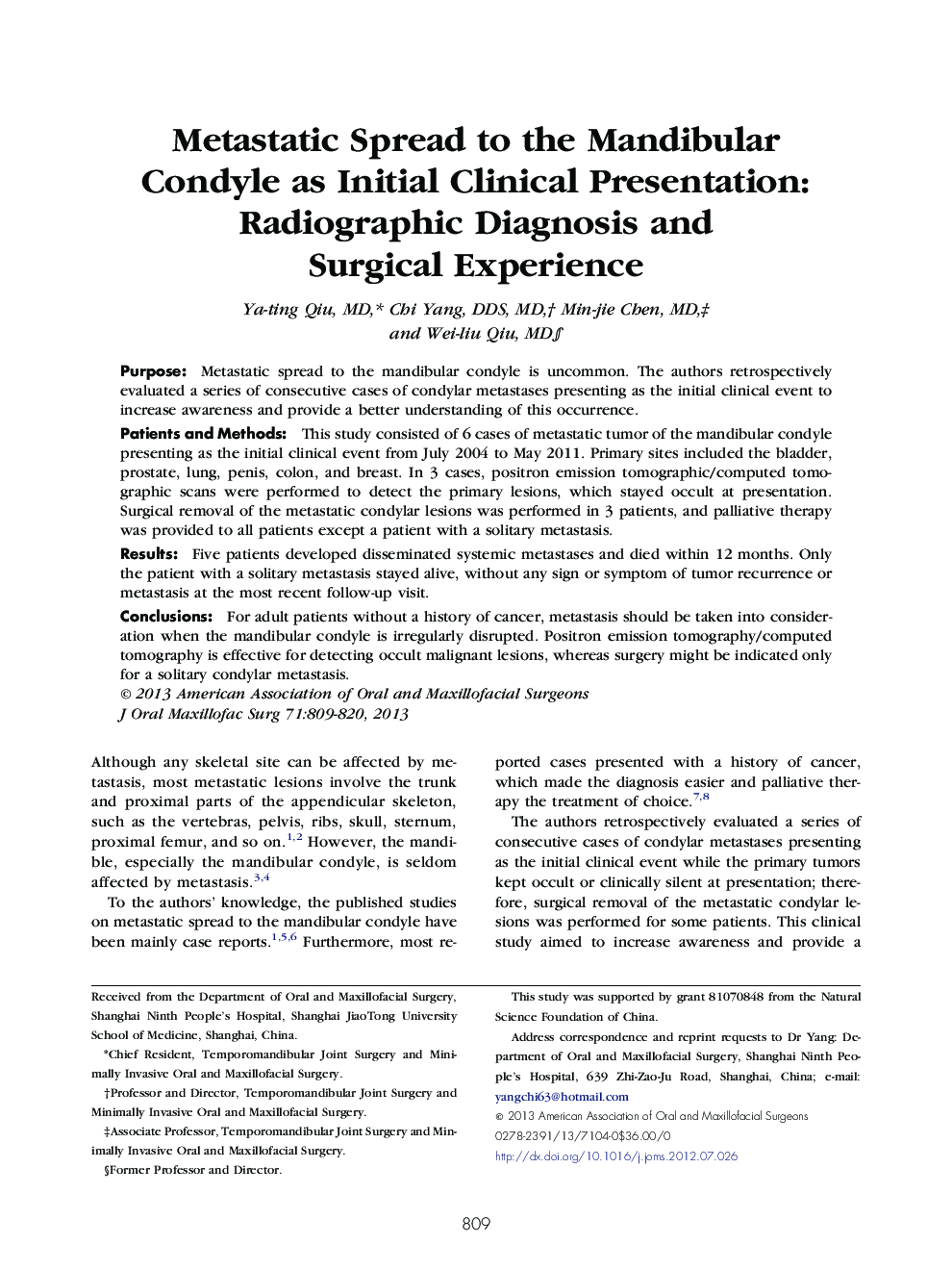| Article ID | Journal | Published Year | Pages | File Type |
|---|---|---|---|---|
| 3156587 | Journal of Oral and Maxillofacial Surgery | 2013 | 12 Pages |
PurposeMetastatic spread to the mandibular condyle is uncommon. The authors retrospectively evaluated a series of consecutive cases of condylar metastases presenting as the initial clinical event to increase awareness and provide a better understanding of this occurrence.Patients and MethodsThis study consisted of 6 cases of metastatic tumor of the mandibular condyle presenting as the initial clinical event from July 2004 to May 2011. Primary sites included the bladder, prostate, lung, penis, colon, and breast. In 3 cases, positron emission tomographic/computed tomographic scans were performed to detect the primary lesions, which stayed occult at presentation. Surgical removal of the metastatic condylar lesions was performed in 3 patients, and palliative therapy was provided to all patients except a patient with a solitary metastasis.ResultsFive patients developed disseminated systemic metastases and died within 12 months. Only the patient with a solitary metastasis stayed alive, without any sign or symptom of tumor recurrence or metastasis at the most recent follow-up visit.ConclusionsFor adult patients without a history of cancer, metastasis should be taken into consideration when the mandibular condyle is irregularly disrupted. Positron emission tomography/computed tomography is effective for detecting occult malignant lesions, whereas surgery might be indicated only for a solitary condylar metastasis.
